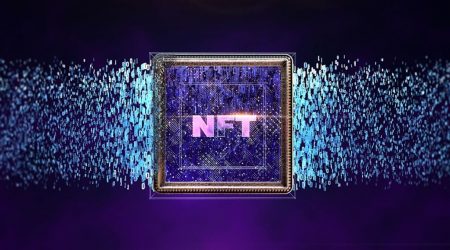How Does Metaverse Affect Crypto?
Table of Contents
How Does Metaverse Affect Crypto?
The metaverse is the concept of a virtual world spanning the physical and digital worlds. It would have a fully functioning economy that allows users to travel between places while maintaining a virtual identity or avatar. It could be considered the virtual equivalent of a theme park, where visitors can move seamlessly between different worlds. This concept has the potential to revolutionize the entire crypto-economy. Ethereum is currently the second-largest cryptocurrency in terms of market cap.
Currently, many tokens are built on the Ethereum blockchain. This could potentially boost the price of the Ethereum token. The largest crypto platform in the United States and the second-largest worldwide, Coinbase Global, is also working on an NFT marketplace. While these two projects have very different goals, they share some similarities. In the following few paragraphs, we’ll look at the benefits and risks of both.
Blockchain technology is a vital component of the metaverse.
The metaverse is an entirely digital world in which users can interact. This virtual environment combines socialization, gaming, and business activities. It quickly gains popularity with new users, and tech companies are pouring resources into it. With blockchain technology, new virtual worlds can be created and used to engage in social interaction, learn, and trade digital assets.
While this is a nebulous concept, blockchain technology has significant benefits that can be used to make the most of the metaverse. By enabling users to create and sell digital assets, blockchain technology allows users to protect those assets from being destroyed or misappropriated. Several real blockchain projects have incorporated this technology into their virtual reality systems. Axie Infinity, The Sandbox, and NFTs are some of the real-world projects that involve blockchain technology and the metaverse.
The blockchain technology used in blockchain technology has several benefits, including decentralization, which helps crypto metaverses remain secure and fair. These technologies use peer-to-peer networks to share computing power, allowing every node on the network to have a copy of the blockchain. In the future, these technologies may be used to create full-fledged societies.
The Decentraland metaverse, which has been running since February 2020, uses blockchain-based cryptocurrencies and NFTs to create a virtual world. Players can explore user-created worlds and compete or collaborate in various games. The Decentraland metaverse also allows users to trade digital goods and assets using their NFTs. Another popular metaverse game is The Sandbox, which allows players to monetize their experience in the metaverse using blockchain technology. In-game items can be sold for NFTs, and they can use their NFTs to buy Fortnite skins.
Virtual Reality
Blockchain and cryptocurrency will be a natural partners in the future of VR. Blockchain has the potential to enhance virtual reality by adding a sense of belonging to the game. Blockchain-powered virtual worlds will enable people to earn real money in a virtual environment. In the future, blockchain-powered virtual worlds will rival real economies. As technology evolves, VR can be the perfect vehicle to boost the crypto-currency industry.
The CEEK token is one such example. Users can use this token to purchase digital goods and attend VR events. The CEEK project has created content for VR and other virtual reality platforms. It has partnered with Real Madrid footballer Dani Carvajal, allowing fans to follow his training and travels in real-time. Other ICOs have already adopted the CEEK token. It is expected that more users will invest in VR to escape reality.
AI
AI systems are capable of processing massive amounts of data. They can make decisions that are not human, and they can optimize users’ experience. For example, blockchain programming allows parties to see the data entry process. It can also predict price fluctuations and decrease the risks of human errors. In general, AI is beneficial for the crypto world, but how does AI affect crypto? This article explores some of the implications.
A big part of AI is analyzing vast amounts of data, including blockchain data, social media comments, and articles. In addition to this, AI-powered cryptocurrency markets are open around the clock, which is vital for active traders who want to keep track of the value of their investments. Artificial intelligence can provide an accurate forecast of a cryptocurrency’s price by analyzing such data. These price forecasts eliminate human error and allow investors to make better decisions based on the data.
Ethereum is the second-largest cryptocurrency in terms of market cap.
Ethereum, the second-largest cryptocurrency in terms of market cap, is a peer-to-peer network used for lending outside of traditional banking institutions. The Ethereum network allows many sites to function, enabling users to make transactions at meager rates. As of Friday, the total value of all the values locked in the deFi platform was $79 billion, increasing more than 600% in just one month.
The Ethereum network has been multiplying, thanks to dApps, decentralized finance applications, and non-fungible tokens. In 2021, the ETH ecosystem grew by 510% and surpassed BTC by 93%. In January, ETH’s market cap was one-tenth of that of BTC, while by November, its market cap was half of its rival’s, or $1.08 trillion.
Developing a solid crypto trading strategy
There are many risks associated with cryptocurrency and the metaverse. Even though the potential for outsized gains is high, they also carry moderate-to-high risk. While the stock market has a proven track record and is backed by actual companies, cryptocurrency and the metaverse do not. It is essential to understand the risks involved before investing in either. Developing a solid crypto trading strategy when dealing with Metaverse is essential to avoiding unnecessary losses and maximizing your profits.
Investing in cryptocurrency is risky, and it is always better to plan for losses while simultaneously hoping for gains. The ‘play to earn’ projects are a prime example of this. As more institutional players jump on the gravy train, we should expect significant movements. Our top picks are Axie Infinity, Blocknet, and Enjin Coin. As the metaverse grows in popularity, we should expect significant gains.



Leave a Reply